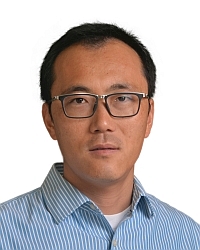TR2017-069
Application of coupled mode theory on radiative heat transfer between layered Lorentz materials
-
- , "Application of coupled mode theory on radiative heat transfer between layered Lorentz materials", Journal of Applied Physics, DOI: 10.1063/1.4983021, Vol. 121, No. 18, May 2017.BibTeX TR2017-069 PDF
- @article{Lin2017may,
- author = {Lin, Chungwei and Wang, Bingnan and Teo, Koon Hoo},
- title = {{Application of coupled mode theory on radiative heat transfer between layered Lorentz materials}},
- journal = {Journal of Applied Physics},
- year = 2017,
- volume = 121,
- number = 18,
- month = may,
- doi = {10.1063/1.4983021},
- url = {https://www.merl.com/publications/TR2017-069}
- }
- , "Application of coupled mode theory on radiative heat transfer between layered Lorentz materials", Journal of Applied Physics, DOI: 10.1063/1.4983021, Vol. 121, No. 18, May 2017.
-
MERL Contacts:
-
Research Area:
Abstract:
Coupled mode theory (CMT) provides a simple and clear framework to analyze the radiation energy exchange between reservoirs. We apply CMT to analyze the radiative heat transfer between layered Lorentz materials, whose dielectric functions can be approximated by the Lorentz oscillator model. By comparing the transmissivity computed by the exact solution to that computed by CMT, we find CMT generally gives a good approximation for this class of materials. The biggest advantage of CMT analysis, in our opinion, is that only the (complex) resonant energies are needed to obtain the radiation energy transfer; the knowledge of spatial profile of resonances is not required. Several issues, including how to choose the resonant modes, what these modes represent, and the limitation of this method, are discussed. Finally, we also apply CMT method to the electronic systems, demonstrating the generality of this formalism.

